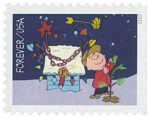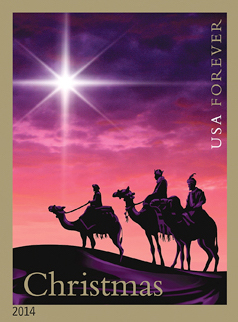![[Dove]](https://riverhouses.org/wp-content/uploads/2023/07/emoji-dove.png) This coming Monday, November 11th, is Veterans Day in the United States, the day we honor all who have served in the country’s armed forces. Veterans Day was originally called Armistice Day because it was on November 11th in 1918 that the guns of World War I fell silent — at the eleventh hour of the eleventh day of the eleventh month. Although Veterans Day in the United States honors all service members, November 11th in many other countries is the day particularly set aside to commemorate the war dead — what we do in the United States on Memorial Day at the end of May.
This coming Monday, November 11th, is Veterans Day in the United States, the day we honor all who have served in the country’s armed forces. Veterans Day was originally called Armistice Day because it was on November 11th in 1918 that the guns of World War I fell silent — at the eleventh hour of the eleventh day of the eleventh month. Although Veterans Day in the United States honors all service members, November 11th in many other countries is the day particularly set aside to commemorate the war dead — what we do in the United States on Memorial Day at the end of May.
World War I produced some of the greatest poetry of the twentieth century, and in recognition of November 11th as an international day of remembrance, our homeschool poem-of-the-week for the second week of November is one of those great works, Laurence Binyon’s “For the Fallen” (1914). The poem has seven stanzas in all, but it is the fourth stanza that is best known, particularly in this magnificent musical setting by Douglas Guest (1916–1996), performed widely throughout the English-speaking world each year at Armistice Day observances.
Note how Guest’s music was written to mirror the emotional tenor of the words, with descending flat notes as we that are left grow old, and then rising brilliance in the morning as we remember in peace.
For the Fallen
With proud thanksgiving, a mother for her children,
England mourns for her dead across the sea.
Flesh of her flesh they were, spirit of her spirit,
Fallen in the cause of the free.
Solemn the drums thrill; Death august and royal
Sings sorrow up into immortal spheres,
There is music in the midst of desolation
And a glory that shines upon our tears.
They went with songs to the battle, they were young,
Straight of limb, true of eye, steady and aglow.
They were staunch to the end against odds uncounted;
They fell with their faces to the foe.
They shall grow not old, as we that are left grow old:
Age shall not weary them, nor the years condemn.
At the going down of the sun and in the morning
We will remember them.
They mingle not with their laughing comrades again;
They sit no more at familiar tables of home;
They have no lot in our labour of the day-time;
They sleep beyond England’s foam.
But where our desires are and our hopes profound,
Felt as a well-spring that is hidden from sight,
To the innermost heart of their own land they are known
As the stars are known to the Night;
As the stars that shall be bright when we are dust,
Moving in marches upon the heavenly plain;
As the stars that are starry in the time of our darkness,
To the end, to the end, they remain.
Laurence Binyon (1869–1943) was a respected British art historian, museum curator, and writer, who, although too old for military duty in World War I, served as a volunteer in hospitals in France and England caring for the wounded. After the war he continued his career as a writer and poet, and he lived long enough to write still more war poems (sadly) after the outbreak of World War II.
![[For the Fallen]](https://riverhouses.org/wp-content/uploads/2023/11/binyon-stamp-2-1024x1024.jpg)
You and your students can learn more about the poetry of World War I in a special online collection brought together by the editors of Poetry magazine.
What discoveries in history and literature have you and your students made in your homeschool this Cygnus Term?
❡ Veterans Day and Memorial Day: Do your homeschoolers know the difference between these two American federal holidays? Memorial Day (originally Decoration Day) is the last Monday in May. It’s the day we honor the nation’s war dead, and it was established after the Civil War. Veterans Day (originally Armistice Day) is November 11th. It’s the day we honor everyone who has served in the nation’s armed forces, and it was established to mark the end of World War I. Armistice Day (under various names) is widely commemorated around the world, whereas Memorial Day is an exclusively American holiday. 🇺🇸
❡ As the stars are known to the night: If a special line or turn of phrase happens to strike you in one of our weekly poems, just copy it onto your homeschool bulletin board for a few days and invite your students to speak it aloud — that’s all it takes to begin a new poetical friendship and learn a few lovely words that will stay with you for life. 🕊
❡ The war to end all wars: For a brief homeschool review of World War I, turn to pages 370–375 in your River Houses history encyclopedia. That’s good section to read each year on the 11th day of the 11th month. 📖
❡ Explore more: The Library of Congress has an illustrated history of Armistice Day and Veterans Day that would make an ideal homeschool read-aloud lesson this week. 📚
❡ Literary lives: The website of the Poetry Foundation includes biographical notes and examples of the work of many important poets (including Laurence Binyon) that are suitable for high school students and homeschool teachers. ✒️
❡ Here, said the year: This post is one of our regular homeschool poems-of-the-week. Print your own River Houses Poetry Calendar to follow along with us as we visit fifty of our favorite friends over the course of the year, and add your name to our River Houses mailing list to get posts like these delivered right to your mailbox every week. 📫
❡ Homeschool calendars: We have a whole collection of free, printable, educational homeschool calendars and planners available on our main River Houses calendar page. They will help you create a light and easy structure for your homeschool year. Give them a try today! 🗓
❡ Support our work: If you enjoy our educational materials, please support us by starting your regular Amazon shopping from our very own homeschool teaching supplies page. When you click through from our page, any purchase you make earns us a small commission at no extra cost to you. Thank you for helping us to keep going and growing! 🛒
❡ Join us! The aim of the River Houses project is to create a network of friendly local homeschool support groups — local chapters that we call “Houses.” Our first at-large chapter, Headwaters House, is now forming and is open to homeschoolers everywhere. Find out how to become one of our founding members on the Headwaters House membership page. 🏡



